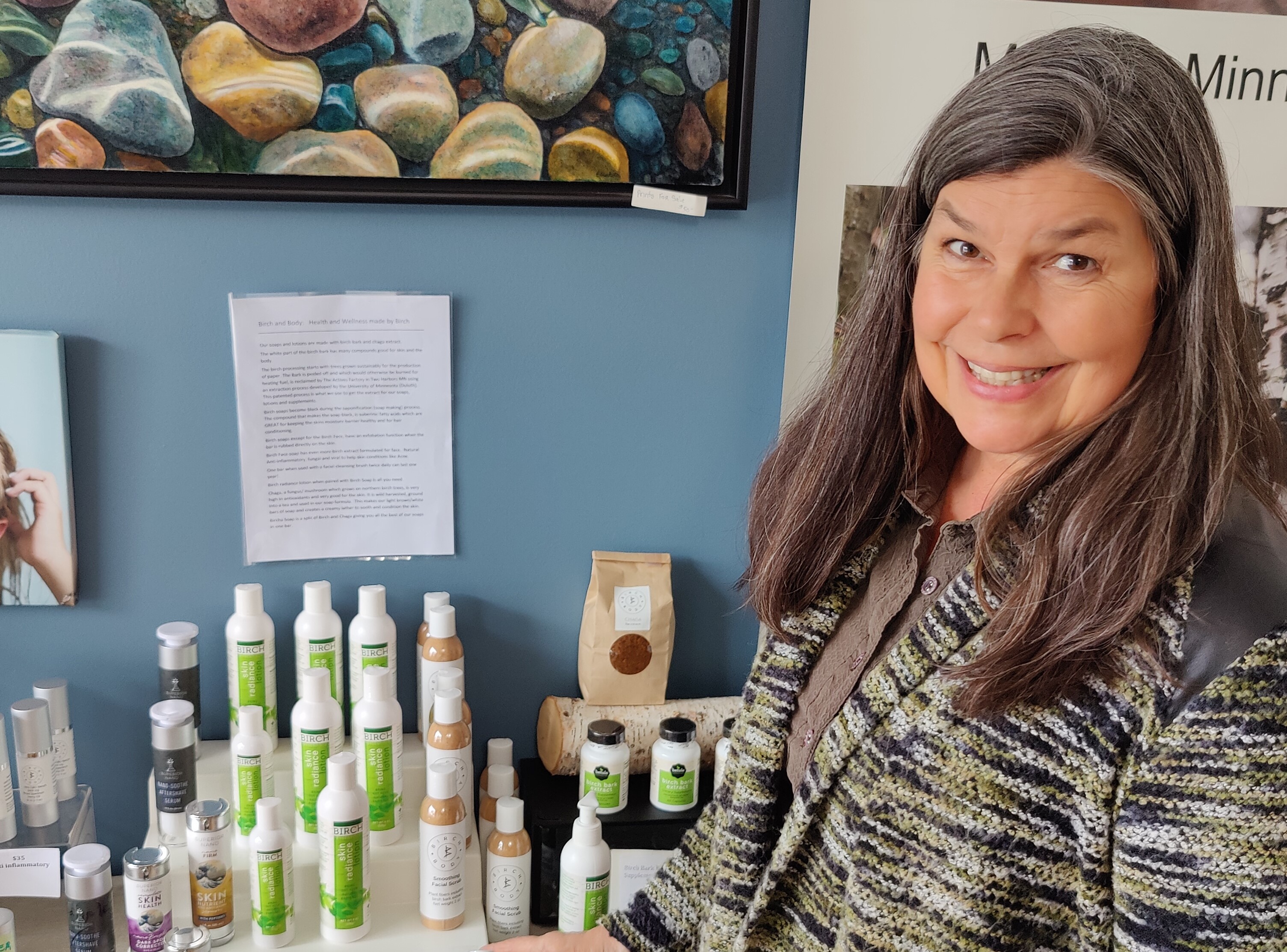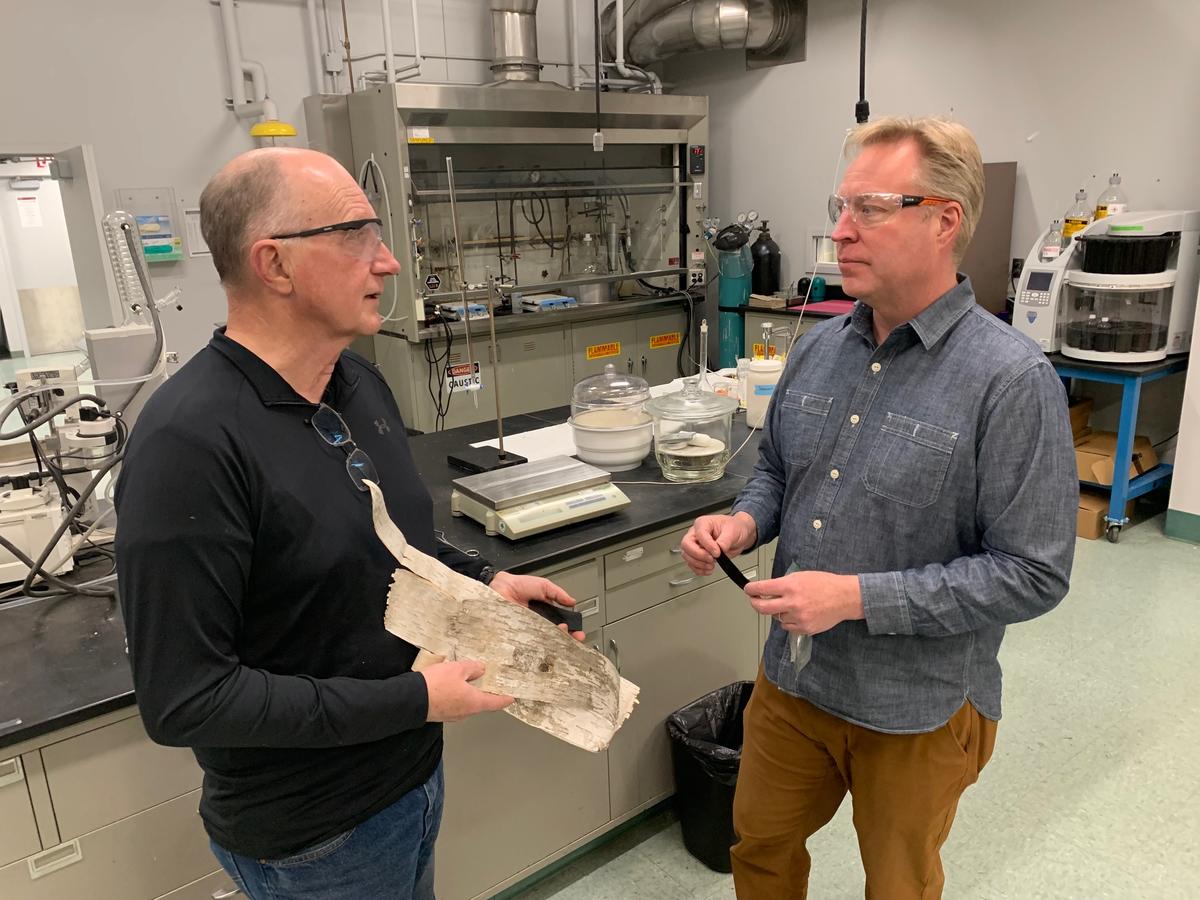Ancient medicine and modern science have both confirmed the healing powers of the natural chemicals in birch bark. Peer reviewed research on birch extracts, which has grown exponentially in the past five years, shows they are effective for prevention and treatment of cancer, chronic inflammation, HIV/AIDS, type 2 diabetes and more.
Developing a process to extract the beneficial chemicals in birch bark was an important endeavor for NRRI starting in the late 1990s into the mid-2000s for its economic potential. UMD Chemistry Professor Robert Carlson identified the potential in wood products waste stream bark and got industry support to move forward. (Read sidebar for a more detailed history.) A large bench- to pilot-scale lab was built at NRRI specifically for the international research team working on the project. NRRI’s patented process produces chemicals from the family of triterpenoids: betulin, betulinic aldehyde, betulinic acid and lupeol.
Commercialization
And that process led to the startup of a small manufacturing plant in 2012 in Two Harbors, Minn., called The Actives Factory. Brian Garhofer, CEO, made the investment because he believed in the power of these chemical extracts, and began sourcing birch bark from the waste stream of Wisconsin lumber mills. He produced the first run of extractives in 2014 and started knocking on doors at pharmaceutical, cosmetic, and supplement manufacturing companies.
“And then we went on a long learning curve,” said Garhofer. “For example, pharmaceutical companies don’t start with a chemical and work up, they develop their own ideas and seek out ingredients. Early on, the knowledge of these chemicals just wasn’t widespread.”
The process was also expensive, so he did an extensive search and found a manufacturing partner in India to make it affordable.
So while the market for birch bark chemicals was nascent when he started, today the research is accelerating. Garhofer figured out how to ship internationally, and having a partner overseas is paying off. Most of the medicinal and cosmeticeutal requests for betulin are coming from places like Israel, India, Indonesia and Germany.
Application in Action
And even though he’s been working at this for 12 years, Garhofer can still be surprised by his customers’ applications. A woman in Alaska is developing a supplement to treat horses with melanoma. Another group is pursuing supplements to treat diabetes in dogs. A company in Canada developed an immune formula using birch extracts and chaga mushrooms. A start-up in Sweden is developing a bio-based rubber using the byproduct of the bark extractives, suberinic acid, a birch tar polymer.
“It’s been exciting, a bit of a roller coaster ride, but it could explode any time and I’m ready,” said Garhofer. “I’m an ingredient supplier and my customers are doing their own research and finding me on Google or Amazon.”
Bricks and Mortar
Meanwhile, his wife Donna started her own birch-infused soaps and lotions shop, Birch and Body, in 2013 both online and a bricks-and-mortar store in St. Bonifacius, Minn. Over the years, she’s found that reaching customers requires education about birch extracts. You’ll find her and her products at local artisan craft shows and events.

“Business is growing steadily,” she said. “We especially like events at the University of Minnesota Arboretum and talking about our connection to the U through NRRI. It really resonates with that demographic.”
When they started down this path, the couple thought they’d give their efforts five years. Twelve years later, it hasn’t made them rich, but they are pleased with the impact they are making – and the potential ahead – to improve lives.
“We would not still be doing this if we didn’t have the passion for it,” Garhofer added. “Maybe we were ahead of the curve, but the inquiries are growing and we’re one of the few outlets selling 100 percent pure birch bark. NRRI’s technology is making this possible.”
NRRI Research Group Leader for Materials and Bioeconomy, Eric Singsaas, acknowledges that, as an early adoption technology, NRRI’s birch bark extractives journey was long and bumpy, but the learning curve was important.
“For lab innovations to succeed, researchers must learn from those outside of the lab -- the business people and public -- what they really need,” Singsaas explained. “We try to keep this in mind as we are in the early stages of exploring other platform chemicals from plants like lignin, cellulose nanocrystals, and biocarbon that offer unique opportunities to create new opportunities from our biomass resources.”
PHOTO TOP: Brian Garhofer (left) discusses birch bark materials development with Eric Singsaas in NRRI's chemical extractives laboratory on November 30.
